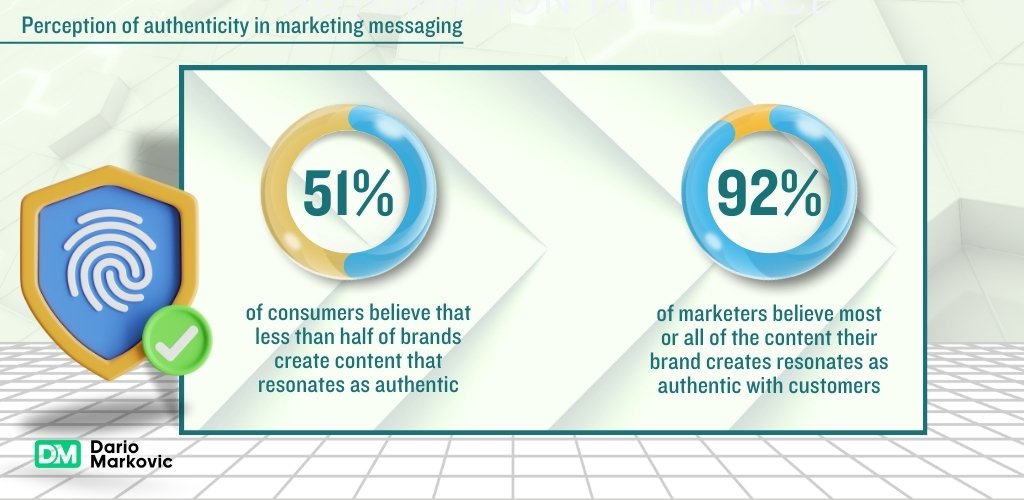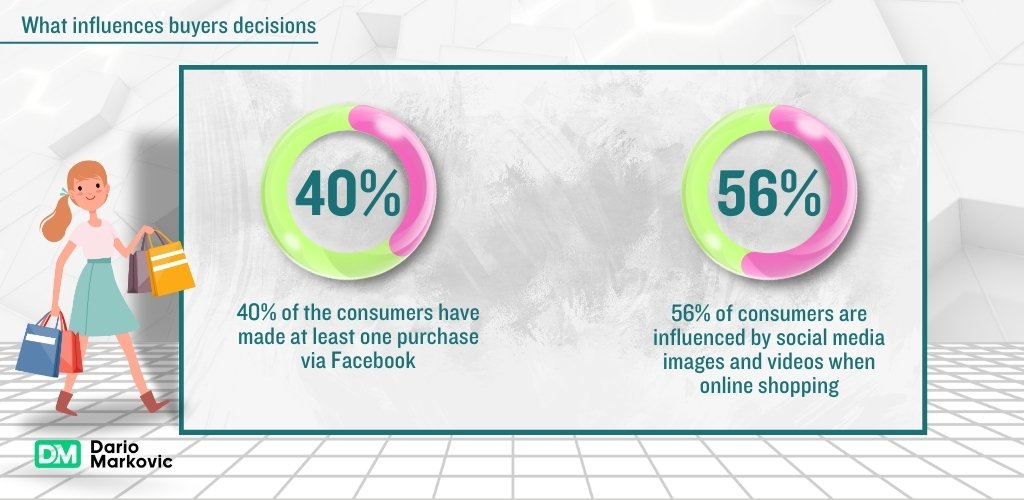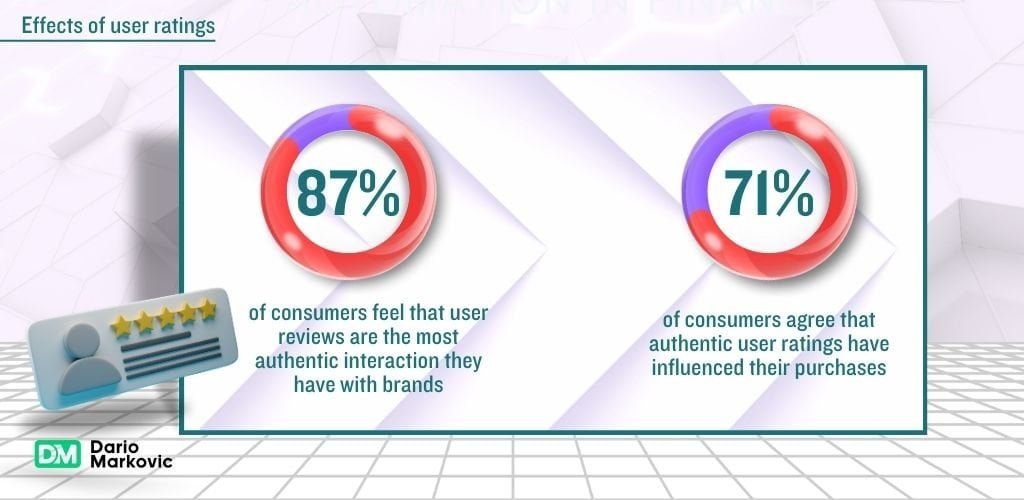It’s hard to snag consumers’ attention these days—and it’s getting progressively harder. The key to breaking through the noise? User-generated content (UGC) in e-commerce.
User-generated content is the beating heart of any successful e-commerce business, providing an authentic voice that resonates with customers and builds a bridge of trust. It is your social proof for potential customers and boosts e-commerce brands.
A dynamic marketplace where your shopping experience is not just transactional but a vibrant tapestry woven by the voices of real users.
User-generated content in e-commerce transforms the traditional buyer-seller relationship into a community-driven adventure. This is to encourage customers through consumer-generated content and build a strong brand image for your social media accounts.
In this blog post, I’ll explore the power of UGC ecommerce and how it can be used to maximize your sales.
The Impact of User-Generated Content in E-commerce: Summary
Influence on Purchasing Decisions: UGC significantly impacts consumer behavior, with 70% of consumers consulting reviews and ratings before making a purchase.
Authenticity and Trust: UGC is perceived as the most authentic form of marketing content, with 60% of consumers believing it to be more genuine than brand-generated content.
Enhanced Marketing Performance: Brands using UGC in their marketing strategies see improved engagement and performance, with 86% of companies using UGC.
Key Takeaways
-
- User-generated content (UGC) is critical in e-commerce marketing campaigns, influencing 79% of consumers’ purchasing decisions and enhancing authenticity, trust, and brand loyalty.
-
- Effective user-generated content campaigns for boosting e-commerce success include customer reviews, testimonials, visual content such as photos and videos, and engaging social media campaigns with specific brand hashtags.
-
- For successful user-generated content integration, e-commerce businesses should focus on strategies for encouraging customer participation, curating and showcasing relevant UGC ecommerce, and implementing robust moderation systems to maintain content quality.
The Power of User-Generated Content in Ecommerce
Far from being a mere trend, User-generated content has established itself as a transformative marketing tool in the e-commerce industry. The raw, unfiltered nature of user-generated content offers a unique glimpse into customers’ minds, providing valuable insights that can steer marketing efforts and shape e-commerce brands and UGC ecommerce businesses.
The impact of UGC ecommerce extends beyond marketing, penetrating the core of consumer behavior. A staggering 79% of individuals admit that UGC strategy significantly influences their buying decisions, demonstrating the unmistakable influence of this content type.
Various methods of displaying and promoting UGC enable e-commerce brands to increase organic traffic and boost conversion rates on their product pages.
Authenticity and Trust
The authenticity of UGC is what sets it apart from brand-generated content. Actual customers’ raw, unfiltered opinions and experiences create an atmosphere of social proof, trust, and credibility. Brands like Pottery Barn have leveraged this authenticity, featuring UGC to help customers visualize their products in real-life settings, thus fostering community.
The concept of social proof is crucial here. It refers to the credibility and trustworthiness a brand earns from its existing customers, shaping its reputation for its e-commerce business. UGC ecommerce is the catalyst that drives social proof, making it an indispensable asset in e-commerce.
Building E-commerce Brands Loyalty
Brand loyalty goes beyond making a single sale; it’s about establishing enduring customer relationships. UGC ecommerce is pivotal in fostering a sense of community and connection with the brand.
E-commerce enterprises can leverage UGC to enhance e-commerce brand loyalty by encouraging customers to share their experiences and incentivize participation through contests or rewards.
This organic cultivation of trust and engagement among the customer base solidifies the brand’s place in the customer’s heart.
Types of User-Generated Content for E-commerce Success
Within the diverse spectrum of UGC, selecting the content that best aligns with your brand persona is imperative. Identifying the suitable type of UGC for your e-commerce brand is essential for optimizing its influence on sales and customer engagement.
From customer reviews, product ratings, social media posts, and images to videos, blog posts, and testimonials, each type of UGC ecommerce carries its charm and potential. The key lies in exploring and experimenting with these content types to find the perfect mix that resonates with your brand and audience.
Customer Reviews and Testimonials
Customer reviews and testimonials, integral forms of UGC, offer many insights. They provide potential customers with an authentic sneak peek into the experiences of real customers, serving as social proof that influences buying decisions.
Customer reviews and product ratings are classified as UGC ecommerce, serving as valuable feedback on the quality and experience of products or services in e-commerce. Such feedback helps businesses fine-tune their offerings, enhancing customer experience and increasing customer satisfaction.
Imagine scrolling through product pages and stumbling upon genuine reviews, photos, and videos shared by fellow shoppers who’ve already embarked on the same customer journey. It’s more than just feedback; it’s a glimpse into real-life experiences, offering valuable insights to make informed decisions.
Visual Content: Photos and Videos
UGC doesn’t just stop at reviews. It extends to a visual feast – imagine a gallery of user-generated images showcasing diverse lifestyles and creative pairing of your favorite products. Suddenly, purchasing becomes an immersive exploration fueled by the authenticity of those before you.
The adage ‘a picture is worth a thousand words’ rings especially true in the realm of UGC. Visual UGC, through customer photos and videos, provides potential customers with real-life product use cases, influencing their purchase decisions.
E-commerce sites can incentivize customers to generate and distribute their photos and videos by implementing various strategies like holding contests, offering rewards, and showcasing the best entries.
But it’s not just about the consumers; UGC empowers businesses too. Brands cultivate loyalty and trust by creating a space for users to share their stories. It’s a digital dialogue where brands listen, respond, and evolve based on the collective feedback of their community.
Tools like Olapic, Pencil, and Influencer Marketing Hub can be used to gather and showcase such content.

Social Media Campaigns and Branded Hashtags
Social media’s influence in generating UGC is undeniable. Social media campaigns and specific hashtags provide an interactive platform for customers to engage with the brand and share their experiences.
Specific hashtags stimulate UGC by:
-
- Establishing a distinct hashtag for your brand
-
- Enhancing your brand’s visibility across social media platforms
-
- Prompting users to share and interact with UGC through the branded hashtag
By utilizing a branded hashtag, the reach and exposure of your brand can be significantly expanded.
This engagement boosts e-commerce brand awareness and fosters a sense of community among customers.
Implementing UGC in Your Ecommerce Marketing Strategy
Incorporating UGC into your e-commerce marketing strategy demands a carefully planned approach. A successful strategy involves encouraging customer participation, curating and showcasing UGC, and monitoring and moderating UGC for quality and relevance.
Strategies such as offering rewards or holding contests can incentivize customers to share UGC.
UGC Ecommerce websites can utilize tools such as Tagshop to:
-
- Gather user-generated content from social media
-
- Generate content feeds
-
- Incorporate shoppable tags
Seamlessly integrate them into product pages to enhance the shopping experience.
Encouraging Customer Participation
Encouraging customer participation is fundamental to stimulating the creation of UGC. Here are some ways to promote customer involvement in UGC:
-
- Offering special discounts or giveaways to motivate customers to share their experiences with the brand
-
- Organizing contests or quizzes on social media platforms
-
- Offering an exclusive glimpse into your brand to customers
-
- Expressing gratitude to loyal customers through rewards and special acknowledgments
Authentic customer content can enhance engagement and help build a strong relationship with your audience.
Curating and Showcasing UGC Ecommerce
After customers begin producing UGC, the subsequent step entails curating and displaying this content. This involves selecting the most relevant, engaging, and high-quality content and displaying it on your website, social media channels, and other marketing strategy materials. You can enhance your brand’s online presence by effectively creating content from UGC.
E-commerce brands should strategically curate and utilize the most captivating, visually appealing, and informative UGC when leveraging it on platforms like Instagram to attract and retain customers through compelling and relatable content.
Monitoring and Moderating UGC
UGC has its pros and cons. While it offers genuine and relatable UGC content, it carries the potential risk of disseminating inappropriate or irrelevant content.
Therefore, establishing a moderation system is crucial to ensure UGC’s quality, relevance, and appropriateness.
E-commerce businesses can employ strategies such as prioritizing high-quality, authentic content that aligns with brand values and investing in creating content, content moderation, and curation to maintain quality and appropriateness.
Tools like WebPurify, Sightengine, and PicPurify can aid in monitoring and moderating UGC.

Gleaning insights from successful examples pave the way for success. This section will look at successful UGC ecommerce campaigns implemented by leading brands.
These case studies provide a wealth of insights and lessons that can inspire and inform your own UGC plan.
Many brands across different sectors have successfully leveraged UGC to boost their e-commerce success, from the fitness industry to cosmetics.
Brands like Outdoor Voices, Madewell, Glossier, GoPro, and many more provide diverse examples of implementing UGC campaigns effectively.
Social media platforms have facilitated user-generated content sharing among social media users. They have converted consumers into brand advocates and used their experiences to leverage user-generated content, reaching a wider audience by re-sharing UGC on their Instagram account.
Measuring the Impact of Your UGC Ecommerce Strategy
The potency of a UGC approach extends beyond content creation and sharing; it also involves quantifying the strategy’s impact.
Tracking and analyzing the performance of your UGC plan is crucial to optimize its effectiveness and maximize its impact on sales and customer commitment.
Identifying UGC-specific key performance indicators (KPIs) and utilizing analytics tools to measure the impact of UGC marketing campaigns are crucial steps in assessing the success of your UGC plan.
From tracking the performance of UGC hashtag campaigns on social media to monitoring website visits, conversions, and revenue generated by UGC campaigns, these steps enable you to refine your strategy and drive better results.
The data can be interpreted through social listening tools to analyze social data and gain a comprehensive understanding of the content and discussions related to your e-commerce brand.

The Power of User-Generated Content in E-commerce: A Statistical Overview
User-generated content (UGC) has revolutionized the e-commerce landscape, providing brands with authentic, relatable, and influential content that resonates with consumers. The impact of UGC is backed by compelling statistics that highlight its effectiveness in driving engagement, trust, and sales.
UGC is not just a trend; it’s a powerful tool that shapes consumer behavior and brand perception. Here are some key statistics that underscore the importance of UGC in e-commerce:
- 70% of consumers consult UGC reviews or ratings before making a purchase decision.
- 41% of consumers read between four to seven UGC reviews to gain better knowledge of a product.
- 73% of ads featuring UGC garnered more positive comments on social networks than traditional ads.
- 86% of brands believe that more authentic UGC in their paid and owned media would improve the performance of their ads and content.
- 25% of search results for the world’s biggest brands are links to UGC.
- 60% of consumers believe UGC is the most authentic marketing content.
- 82% of consumers say they are more likely to make a purchase from a brand that uses UGC in their marketing initiatives.
- 80% of Gen Z consumers have shared or are willing to share their purchases on social media.
- 93% of marketers agree that content created by consumers performs better than branded content.
- 86% of companies use UGC as part of their digital marketing strategy.
These statistics highlight the significant role UGC plays in influencing consumer decisions and enhancing brand authenticity. By leveraging UGC, e-commerce businesses can build stronger connections with their audience, foster trust, and drive higher engagement and sales.
Wrapping Up My Experience with UGC Ecommerce
In conclusion, user-generated content is a powerful tool in the e-commerce industry. It provides an authentic voice to your brand, builds trust and credibility, fosters brand loyalty, and maximizes sales.
Incorporating UGC into your e-commerce strategy requires careful planning, implementation, and monitoring.
Successful e-commerce brands like Lush Cosmetics and Glossier have shown the power of UGC in boosting brand awareness and customer engagement.
In UGC ecommerce, every click is a step into a living marketplace, a testament to the power of shared experiences shaping the future of online shopping.
So, why settle for a transaction when you can embark on a journey with a community that transcends the boundaries of a typical online store? Join the UGC revolution – where every purchase is a story waiting to be told.
FAQ
UGC ecommerce is a strategy that uses user-generated content to improve conversion rates, reduce cart abandonment, and enhance brand-customer relationships, making it a critical tool for brands.
UGC stands for “User-Generated Content,” which refers to original content created by customers and shared on social media or other platforms.
These can include images, videos, reviews, and testimonials.
UGC Shopify refers to user-generated content in e-commerce, which includes any content created and shared by customers to showcase their experiences with products or brands.
Yes, ecommerce brands pay for UGC content but don’t pay for access to an audience, which saves them money.
UGC examples include customer reviews, creating content through social media posts and blog comments and sharing user-generated content and videos.
These examples can be valuable for businesses to gather insights and engage with their audience effectively.
You can encourage customers to create and share UGC by offering incentives such as discounts, freebies, or entries into a contest. Additionally, prompt them to share their experiences through follow-up emails or social media campaigns.
Focus on customer reviews, testimonials, photos, and videos. Visual content, in particular, is highly effective as it shows your products in real-life settings, making them more relatable and trustworthy.
Integrate UGC into your marketing campaigns by using customer photos, videos, and testimonials in your email marketing, social media ads, and website banners. This makes your campaigns more authentic and relatable.
Implement a robust moderation system to review and approve UGC before it’s published. This ensures the quality and relevance of the content, maintaining your brand’s credibility. Curate the best content to showcase on your platforms.
UGC helps build a community by fostering engagement and connection among your customers. Engage with your customers on social media, respond to their posts, and create forums or groups where they can share their experiences and connect with each other.
Brands like Pottery Barn have successfully leveraged UGC by featuring customer photos to help others visualize their products in real-life settings. This not only boosts trust but also creates a sense of community.
UGC can improve SEO by providing fresh, relevant content that search engines favor. It also increases organic traffic as customers often share their content on social media, driving more visitors to your site.
Yes, UGC provides valuable insights into customer preferences and pain points, which can inform product development and improvements. Analyzing UGC can help you understand what features or products your customers love or want.
Measure the success of your UGC campaigns by tracking metrics such as engagement rates, conversion rates, and the volume of UGC created. Tools like Google Analytics and social media insights can help you monitor these metrics.
Ensure you have permission to use the content by asking customers for explicit consent. Clearly outline how their content will be used and respect their privacy. It’s also important to comply with copyright laws and platform-specific guidelines.



